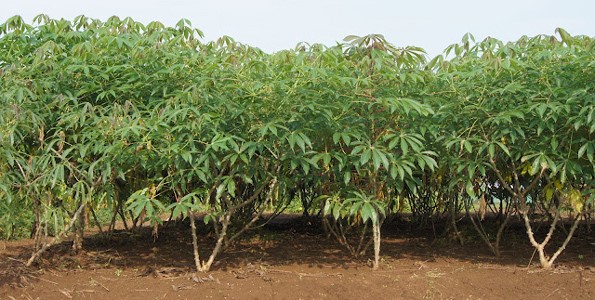Cassava
Varieties
1.0 INTRODUCTION
Cassava (Manihot esculenta) is one of the most important root and tuber crops. Its yields of carbohydrates per unit area are very high. Cassava is important as source of food, cash and raw materials for industrial use. Even in areas where maize is staple food, cassava is used as supplement. Cassava is particularly important as food crop in seasons of drought and survive relatively well in marginal soils.
Cassava is the staple food crop in lake shores areas of Nkhotakota, Nkhata Bay, Rumphi, and Karonga. In some districts of Malawi such as; Mzimba, Kasungu, Lilongwe, Dedza, Dowa, Machinga and mulanje. Cassava is becoming a major cash crop. It is also grown in other parts of the country as a security crop, eaten as a snack and also as dry cassava chips. The leaves are also used as relish. Cassava is used as livestock feed. Cassava is a drought tolerant crop with ability to yield well in marginal soils, tolerance to pest and diseases, minimal labor requirements compared to grain crops.
The core objective is to improve production in areas where it is staple food and encourage every farmer to grow them as food and cash crops.
By the end of this module farmer will be able to;
- Understand good management practice for cassava
- Understand how to better manage cassava pest and disease
- Acquire knowledge on improving cassava production
- Receive knowledge on post-harvest handling
2.0 THE ENVIRONMENTAL REQUIREMENT OF CASSAVA
2.1 Temperature
- Cassava finds the most favorable growing conditions in humid-warm climates at temperatures of between 25 - 29°C
- Where they are high temperature fluctuations, the annual average temperature must amount to 20°C.
- With low fluctuations in temperature, 17°C is also sufficient for successful cultivation
2.2 Rainfall
- The precipitations of between 1000 - 1500 mm which ideally should be evenly distributed
- In view of the climate, cassava has an enormous ability to adapt.
- Cassava is able to survive longer dry spells
2.3 Sunlight intensity
- Cassava likes light
2.4 Soils
- Sandy loam soils with medium soil fertility and with good drainage.
- Saline, strongly alkaline and stony soils, and soils with stagnant water are unsuitable for the cultivation of cassava.
- Stony soils inhibit the formation of the root tuber.
- Where soil fertility is concerned, cassava is easily satisfied.
- Even on very poor and acidic soils which are totally unsuitable for the cultivation of other plants, the cassava will still provide a relatively good crop.
3.0 CHARACTERISTICS OF CASSAVA VARITIES
There are almost 12 recommended varieties, nine varieties which are improved and other three are local. Farmers are encouraged to use these varieties to obtain good yields per unit area and Each variety has different potential as indicated in table 1.
TABLE 1: IMPROVED VARIETIES OF CASSAVA
|
NAME |
TASTE |
MATURITY PERIOD(months) |
POTENTIAL YILED (mt/Ha. Flesh weight) |
|
Manyokola/ Mbundumali |
Sweet |
9-15 |
25 |
|
Gomani |
Bitter |
9-15 |
25 |
|
Chitembwere |
Bitter |
15-18 |
18 |
|
Silira |
Bitter |
12-15 |
25 |
|
Maunjili |
Bitter |
9-12 |
35 |
|
Mkondezi |
Bitter |
9-15 |
40 |
|
Sauti |
Bitter |
12-15 |
25 |
|
Yinauti |
Bitter |
12-15 |
25 |
|
Phoso |
Bitter |
12-15 |
35 |
|
Mulola |
Bitter |
12-15 |
40 |
|
Sagonja |
Bitter |
9-12 |
35 |
|
Chiombola |
Bitter |
9-12 |
45 |

